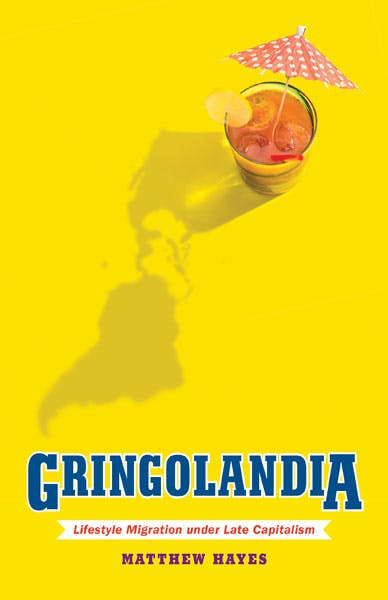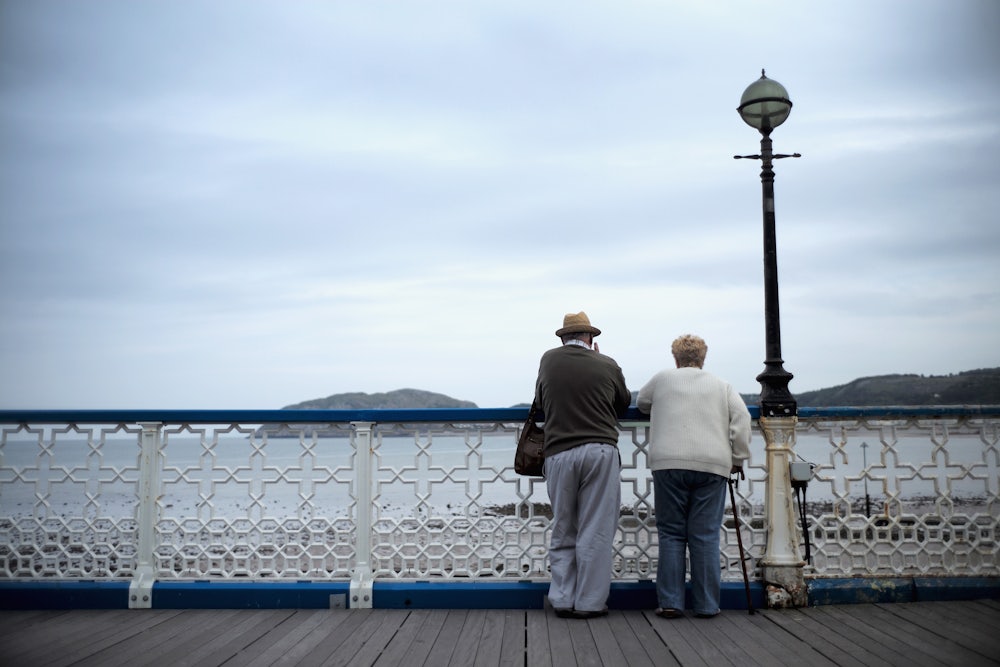Donald Trump has encouraged a vision of Latin America as a land of endless chaos where one can never be too careful. The Sicario movies summarize these fears: Trips to Mexico always take place in convoys of armored Humvees and, even then, the law enforcement officers with assault rifles are attacked. For those who hold this worldview, Latin America is a uniformly horrible wasteland that migrants will do anything to flee. Yet, if Americans really believed that, why would so many go there, much less retire there?
The new book Gringolandia: Lifestyle Migration Under Late Capitalism by Matthew Hayes explores the little-discussed phenomenon of migration from North to South by retirees, focusing on the historic city of Cuenca, Ecuador. In this city, as many as 12,000 North Americans have arrived in recent years to enjoy the colonial Spanish architecture and low cost of living. The movement of “snowbird” pensioners from cold Northern countries to warmer, Southern ones, illustrates that maintaining middle-classness into one’s golden years is getting more and more difficult. It is also the story of the stark inequality between wealthy countries that produce “expats” and poorer countries that send “migrants.”
Hayes, a Canadian sociologist, explores what makes people leave their communities at the end of their lives, when relocating to a place with a different culture and language is a daunting undertaking. Half a million social security checks are mailed internationally each month but far more elderly Americans live abroad than that. Some of Hayes’s informants, like Mary from Australia, moved to Cuenca because “life seems to be narrowing” at home as friends pass away. “By contrast, she saw a potential move to Cuenca,” Hayes writes, “as an ‘expansionary thing to do.’” Others felt that they had been deprived of travel during their working years and wanted to go all out now by relocating and immersing themselves in a new culture.
Adventure is often the story that expats tell about themselves to assuage the embarrassment of outsourcing their own retirement to a cheaper place. Many of the Americans interviewed by Hayes moved because of divorce, job loss, and inadequate pensions. Particularly women, who entered the labor market in the 1970s but accumulated far less wealth due to unequal pay, liked the option of an offshore retirement. Many international retirees say they’re seeking a late-in-life challenge, in order to show that they still have agency and can navigate their own lives. Yet, in an era in which worker insecurity is heralded as flexibility and freedom, “challenges,” “agency,” and “optimization” have become less-than-reassuring neoliberal buzzwords for making do with less.

Some of the people who move to Cuenca barely meet the minimum retiree visa requirement to have $800 in income per month. In Cuenca, this sum is enough to get by on comfortably, whereas it would mean poverty anywhere in the United States. Wealthier retirees can trade in their aging houses in the suburbs for a swanky new apartment in downtown Cuenca (for about $75,000) and keep the balance to pay for luxuries like private maids and cooks. One professional couple, badly hit by the 2008 crisis, told Hayes that they had a lifestyle “with all the toys” but on the eve of retirement, they were about to drop from “living in the top 20 percent in the United States to the bottom 20 percent.”
These cost savings rely on the inequality between rich and poor countries. Hundreds of thousands of Brits have moved to Spain not just because their National Health Service plans are valid there (until a hard Brexit terminates that agreement) but also because the cost of living is lower than anywhere in the London region. And, although Americans may not be able to use their Medicaid in Mexico, Panama, Ecuador, or anywhere else with large populations of retirees, they can afford plush private hospitals in those countries for a fraction of U.S. healthcare costs.
Hayes likens the retiree’s strategy of “maximizing one’s potential day-to-day spending power in a low-cost country” to the practice of “corporate offshoring, whereby corporations take advantage of lower labor costs in developing countries and sell finished products to higher-earning laborers in high-cost geographic regions.” This lets national governments off the hook for failing to provide for the aged, while giving developing countries economic opportunities in the form of comparatively wealthy migrants.
Retirees do in fact care about the economic disparity between their lives and the precarious existences eked out by most Ecuadorians, Hayes shows. At the same time, they don’t consider themselves especially privileged: They feel like “economic refugees” from a country that no longer wants them or can no longer adequately take care of them.
“Gringo” retirees share a sense of economic abandonment not only by the state but also by society. A generation ago, moving from New York to Florida was a major end-of-life migration pattern that strained families trying to make sure nana and papa stayed connected to their children and grandchildren. While new technologies make staying in touch easier today, many families have lower expectations when it comes to maintaining social and family networks at great distances. While people once chose where to live based on “obligations to community or to family” and on “attachments to people and places,” they now focus increasingly “on maximizing material self-interests” instead.
Some of Cuenca’s North American retirees were deeply attracted by their perceptions of Cuenca’s old-fashioned culture of community life, family bonds, and relative safety. These views were often shaped from a blend of casual observation and ideas of South America that they absorbed from stereotypes in American media. Rarely did perceptions of Ecuador come from sharing time with locals—a difficulty for retirees who frequently lack even basic Spanish. A retiree from Brooklyn said that Cuenca reminded him of the borough in the 1950s and early 60s: “It was a time of innocence…your mother let you out…and there wasn’t a concern that you were going to get grabbed or mugged.”
The easily summoned nostalgia of old age combined with a sense of Latin American “authenticity” dangerously flirts with the notion that places like Cuenca are stuck in the past and filled with traditionalism. Indeed, this concept is what allows for some pensioners both to live in Cuenca and to support Trump’s border policies: Latin Americans, the thinking goes, are good when they stay where they are; the bad ones are those who come to the U.S. to cause harm.
Like many in the United States, Ecuadoreans have concerns about migration into their country. As retirees come to cities like Cuenca, they drive up real estate prices and crowd out locals from the best downtown properties. They also fundamentally change the local culture because Cuenca’s economy has reoriented to promote tourism over other industries. Hayes observes open-air markets relocating and small businesses that served the community shutting down. The urban messiness of street vendors gets tidied away as more sanitized stores that cater to foreigners take over.
One cannot blame American retirees for wanting a better quality of life outside the United States. Hayes makes clear that lifestyle migrants “just wanted to be able to avoid ‘genteel poverty’ in their retirement years, check out from divisive American politics, or escape the insane work lives of a hypercompetitive labor market.” Gringolandia reframes the unidirectional story of migration that comes from the Trump White House, showing that not everyone is clamoring to enter the United States. Many also want to leave it. They may want to live abroad for the healthcare, or cost of living, or, perhaps, just to escape the President’s early morning tweets.
What Hayes’s book forcefully shows is how extensively the global economy fuels displacement. Severing community bonds is no longer something that only those on the bottom must do to find work but, increasingly, it is expected of people who want to stay in the middle class. (And those in the top one percent have long treated residency and citizenship as fluid categories, with varying financial and lifestyle benefits.) Every decision, even around something as inevitable as aging, must be submitted to a cost-benefit analysis. Whether you call it offshoring or migration, people in and outside of the United States increasingly find their lives shaped according to the same business logic. The thing we have the power to change is the political rhetoric that rejects some and welcomes others.
